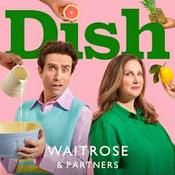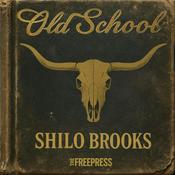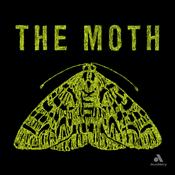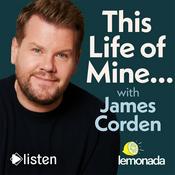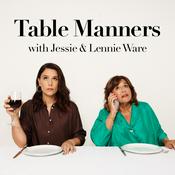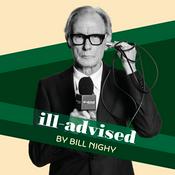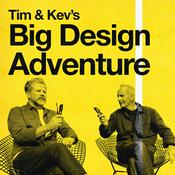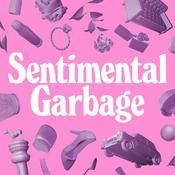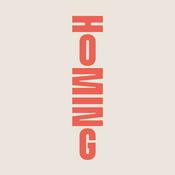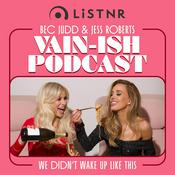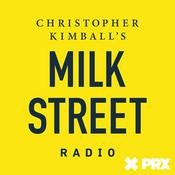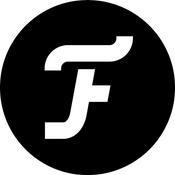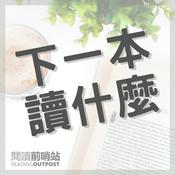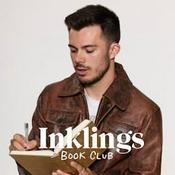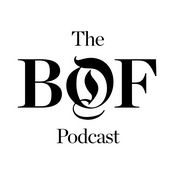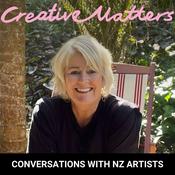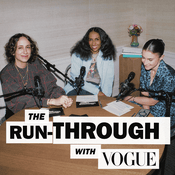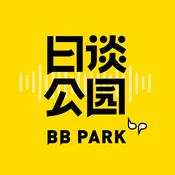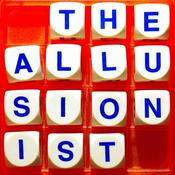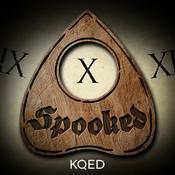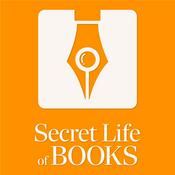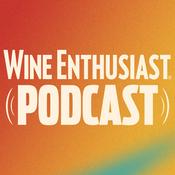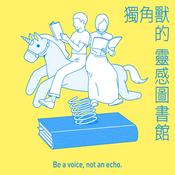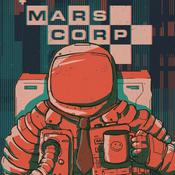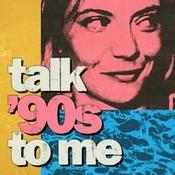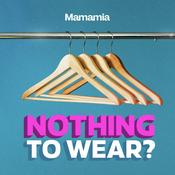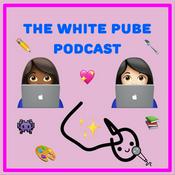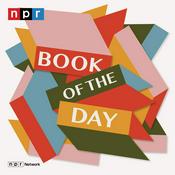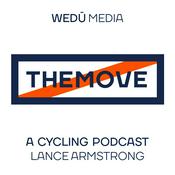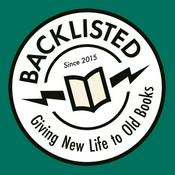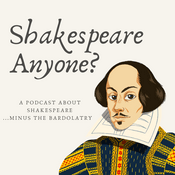Available Episodes
5 of 24
- Cinnamon Lee, 2025 MAKE Award winnerHost Lisa Cahill meets with the winner of the 2025 MAKE Award, metalsmith and jeweller Cinnamon Lee. Cinnamon tells us about her hybrid practice combining jewellery and lighting, the intricate process of making her winning work Noctua, and the hidden meanings embedded throughout the piece. You'll hear from judges Brian Parkes and Simone LeAmon on what made Cinnamon's work a prize-winning piece.Sydney-based artist Cinnamon Lee is trained as a gold and silversmith, creating wearable objects in the form of jewellery and non-wearable objects in the form of lighting. Her practice is characterised by meticulous hand-crafted detail, hidden elements, and a fascination with creating "more than meets the eye." Lee has been a practising artist for 30 years, having studied and taught at the Canberra School of Art's Gold and Silversmithing workshop.GuestsCinnamon Lee, metalsmith and jewellerBrian Parkes, CEO at JamFactory, Adelaide, South AustraliaSimone LeAmon, inaugural curator of Contemporary Design and Architecture at the National Gallery of VictoriaShow highlights and takeaways[00:03] Secrets and hidden beauty"Everybody likes a secret." Cinnamon Lee introduces her philosophy on jewellery and the personal relationship between object and wearer. She discusses her practice of hiding gemstones – sometimes partially, sometimes completely – inside rings and other pieces.[02:54] A young metalworkerCinnamon describes how she discovered metalworking at age 17 through Enmore Design Centre, where her mother was teaching. "Once I was in that workshop it was like I'd found my calling, which I feel really fortunate about because it happened quite quickly."She spent the next decade studying and eventually teaching at the Canberra School of Art's Gold and Silversmithing workshop with Johannes Kuhnan and Ragnar Hansen. "It completely changed my life, that workshop."[04:47] Cinnamon's practiceCinnamon explains that she creates both wearable objects (jewellery) and non-wearable objects (lighting), often using very precious materials.[00:05:12] Winning the 2025 MAKE AwardLisa congratulates Cinnamon on winning the MAKE Award, biennial prize for innovation in Australian craft and design. "It feels especially meaningful given that I am now marking the 30th year of being a practising artist. So to have this recognition by the craft and design community is very special."Cinnamon reflects on her long relationship with the Australian Design Centre, dating back to her first exhibition as a student in 1995 at the Crafts Council of New South Wales Space in the Rocks, Sydney.[06:44] Noctua: the winning work Lisa asks about the meaning of Noctua, and Cinnamon explains it's the genus name for a cutworm, a type of nocturnal moth, with the Latin translation meaning Little Owl.The object is a hybrid creation – a slender standing lamp made of stainless steel, just over one and a half metres tall, with a cylindrical head containing the light source. But it holds secrets:"As well as being a lamp, it also contains a wearable brooch. So the wearable...--------30:20
- Artist Deep Dive: Seven key works in Helen Britton's The Story So FarA deep drive into seven key works by Helen Britton, from her current exhibition The Story So Far. In this audio tour, Helen describes how she made each work, her techniques and materials, and the stories behind each piece.The Story So Far is a major solo, touring exhibition that honors Helen Britton as the tenth artist in the series Living Treasures: Masters of Australian Craft. Living Treasures recognises eminent Australian craftspeople, celebrating their mastery of skill, their achievements and the unique place they occupy in the national design culture. Featured works and excerpts1. My Godmother's HouseA set of 20 photographs taken in northeast New South Wales near Yamba on Yaegl Country. Over several years I took over 700 photographs. We've selected twenty for the exhibition. What was really fascinating for me were the collections within the house. Shell collections, stone collections, gathered objects and how they were arranged. And then, of course, the path of time. So you'll often see the dust. I was very interested in photographing the the dust as a metaphor, the material reality of time passing.2. The Mysterious Path of Matter and TimeA small cabinet framed by branches. A work made out of my childhood detritus [using] a cabinet that I made about 30 years ago, and cement branches. The cement branches does give it a ritualised, almost relique object-like atmosphere, which is what I was trying to achieve. It's also in the true sense of the expression cemented into eternity. Cement is a very interesting material because it is so stable and has such a long life. And it's an ancient material, which I think we also tend to forget.3. Junkyard Three A monumental necklace made of many parts. I've created a piece using absolutely everything I could find leftover in my studio, and put it together. I've used the circle and bone catch for many years. For me, it is an interesting way to close a necklace, a circular necklace, with these two symbols.And the rest of the pieces in Junkyard Three are often leftovers from my industrial series. Works preoccupied with the kind of environment that I grew up with in Newcastle in the 1970s and early eighties where BHP was kind of at its peak. For example, all of the barrels and rods that you would see lying around on the periphery of industrial areas.4. The Magic Cupboard When I was told I was to be the Living Treasure of Australian Craft, I decided to create a kind of 'cabinet of wonders' that included everything going back to my early childhood, the things that kind of triggered my imagination over all of those years. And include archival works. On the bottom shelf, there is a porcelain plate painted by my godmother that she made that as a gift to me. She was very interested to make something not conventional, because she thought I'd appreciate that more. It's quite a dynamic drawing of geckos. On the top shelf are a pile of airplanes made by my brother.In the drawer, some of my dolls, put to rest.5. The Big and The Small ThingsA large wall piece of paintings and jewelry depicting animals and bones. I guess the bones make this work much more sombre. They're often... what's left over. After we've eaten an animal or what's left...--------19:29
- Helen Britton: Living Treasure Master of Australian CraftHelen Britton is a multidisciplinary Australian artist based in Munich, Germany. Her practice includes jewellery, sculpture, drawings, stencils and installations, and is informed by popular culture, threatened traditions, environmental destruction and human anxiety.The Australian Design Centre honoured Helen as a Living Treasure in 2025.GuestsJulie Ewington is a writer and a curator and sometimes a broadcaster living on Gadigal land in Sydney.Show highlights and takeawaysChildhood in Newcastle [00:05]Growing up in working-class Newcastle exposed Helen to industrial processes that became foundational to her art. "We were taken as tiny children to the BHP and we watched them pour tonnes of molten steel... Watching this steel for making ships being poured... It was fairly impressive." These early experiences with molten materials and manufacturing processes sparked her lifelong fascination with material transformation.Creative making was everyday life [5:00]Helen's mother encouraged constant making. "You'd spend your weekend, doing stuff making things, gluing things together, sewing things, not necessarily always practical things." Her grandfather was a blacksmith who even shod horses for the Australian Olympic team, embedding craft traditions deeply in family life.Making material connections[6:00]Helen was drawn to understanding material processes from start to finish. "Thinking about the connection between the grass and the cow, and the milk and the butter and the ice cream that was made. This was really important to me as a child. I loved making those connections in my mind."Helen's Godmother's house [7:00]At her godmother Kath Carr's house on Yaegl Country near Yamba, Helen painted porcelain, pressed flowers, and made jewelry with polished stones. "There was never any hierarchy of what you did, it flowed from one activity to the other. And I think that was incredibly formative for me as an artist."Comprehensive art education foundation [10:00]Helen completed 12 years of university education across Newcastle, Sydney, and Perth. At Edith Cowan University, she did "13 hours a week for three years" of life drawing, plus printmaking, textiles, painting, photography, and cultural studies - building a thorough technical foundation.Julie Ewington's discovery moment [11:00]Curator Julie Ewington describes receiving Helen's master's degree work: "A beautiful wooden little box... with 15 or 20 objects each in their own little compartment... mostly broaches... unexpected combinations of things like pearls and plastic, silver and tin. She's no respecter of conventional value."Research drives material choices [14:00]Helen's material selection comes from deep historical research. "I get fascinated by certain, often objects or practices or geographical locations and their histories. And so I will then go and find out about them. I'll research them."Glass birds led to Thuringia discovery [14:20]A chance encounter at a Munich Christmas market with glass ornaments led to exploring the 500-year history of glassmaking in Thuringia's forests. Glass makers settled there in 1497 after being "driven from through one of the many wars out of Bohemia" because the region had "forests, sand and water" - everything needed for glassmaking.Long-term process [17:00]Helen's research and creative process happens over many years. Describing her work in Thuringia, "I started in 2001, researching there... And I couldn't make work about that experience until 2007. And then subsequent exhibitions around the glass animals happened in 2009, 2018, 2020...--------31:58
- Johannes Kuhnen, MAKE Award finalistHost Lisa Cahill chats with master metalsmith Johannes Kuhnen. Johannes Kuhnen is one of the pioneers of anodised aluminium metalwork. In this episode, Johannes explains why he finds anodising annoying, and his design process.Hear from judges Jason Smith, Hyeyoung Cho and Brian Parkes on his MAKE Award entry, Remnant Green.Johannes Kuhnen is one of Australia's most well recognised silversmiths. Johannes' practice has remained at the forefront of innovation, in particular his pioneering use of anodised aluminium. A fascination with the colour options of the aluminium continue to provide inspiration for his work and have also inspired many others to explore such potential.GuestsJohannes KuhnenJason Smith, Director and CEO of Geelong Gallery, VictoriaHyeyoung CHO, Chair of the Korea Association of Art and Design, and expert panel member of the Loewe Foundation Craft PrizeBrian Parkes, CEO at JamFactory, Adelaide, South AustraliaCreditsObject is a podcast of the Australian Design Centre and is made on Gadigal Country in Sydney, Australia.It's hosted by CEO and Artistic Director Lisa Cahill and produced by Jane Curtis, in collaboration with Lisa Cahill. Sound Engineering is by John Jacobs.--------17:11
- Csongvay Blackwood, MAKE Award finalistHost Lisa Cahill chats with partners in life and work, Csilla Csongvay and Matt Blackwood. In this episode, Csilla and Matt share the inspirations behind their work, what it takes to enter an award, and how they made a single sculpture from 100 pieces of clay.Hear from judges Jason Smith, Hyeyoung Cho and Brian Parkes on their work, Walk the Line Version 7.GuestsCsilla CsongvayMatt BlackwoodJason Smith, Director and CEO of Geelong Gallery, VictoriaHyeyoung CHO, Chair of the Korea Association of Art and Design, and expert panel member of the Loewe Foundation Craft PrizeBrian Parkes, CEO at JamFactory, Adelaide, South AustraliaCreditsObject is a podcast of the Australian Design Centre and is made on Gadigal Country in Sydney, Australia.It's hosted by CEO and Artistic Director Lisa Cahill and produced by Jane Curtis, in collaboration with Lisa Cahill. Sound Engineering is by John Jacobs.--------20:39
More Arts podcasts
Trending Arts podcasts
About Object: stories of design and craft
Contemporary design and craft in Australia.
Season 3 goes behind the scenes of the 2023 MAKE Award, Australia's newest and richest national award celebrating innovation in contemporary craft and design. Meet the winner Vipoo Srivilasa; and finalists High Tea with Mrs Woo; Julie Blyfield, Csongvay Blackwood, and Johannes Kuhnen. Hear from MAKE Award judges Jason Smith, Hyeyoung Cho and Brian Parkes.
Season 2 is all about ceramics - production pottery, teaching and learning with clay, museum collections, personal collecting, working with galleries, and ceramics writing and photography. Hear from Ilona Topolcsanyi, Brett Stone, Jane Sawyer, Robyn Phelan and Eva Czernis-Ryl.
Season 1 explores the Masters of Craft - nationally and internationally acclaimed Australian craftspeople working in ceramics, jewellery, textiles and metal. Why does their work matter? How do they keep going? What’s their advice for makers now?
Hear from artists Prue Venables, Jeff Mincham, Lola Greeno, Liz Williamson, Les Blakebrough, Marian Hosking and Robert Baines, and go behind the scenes on the making of the 'Living Treasures' program with Brian Parkes.
Object: stories of design and craft is by the Australian Design Centre.
It's hosted by our CEO and Artistic Director Lisa Cahill.
Production by Jane Curtis, with production support by Alix Fiveash.
Sound engineering by John Jacobs.
Podcast websiteListen to Object: stories of design and craft, Jane Austen's Paper Trail and many other podcasts from around the world with the radio.net app

Get the free radio.net app
- Stations and podcasts to bookmark
- Stream via Wi-Fi or Bluetooth
- Supports Carplay & Android Auto
- Many other app features
Get the free radio.net app
- Stations and podcasts to bookmark
- Stream via Wi-Fi or Bluetooth
- Supports Carplay & Android Auto
- Many other app features


Object: stories of design and craft
Scan code,
download the app,
start listening.
download the app,
start listening.

